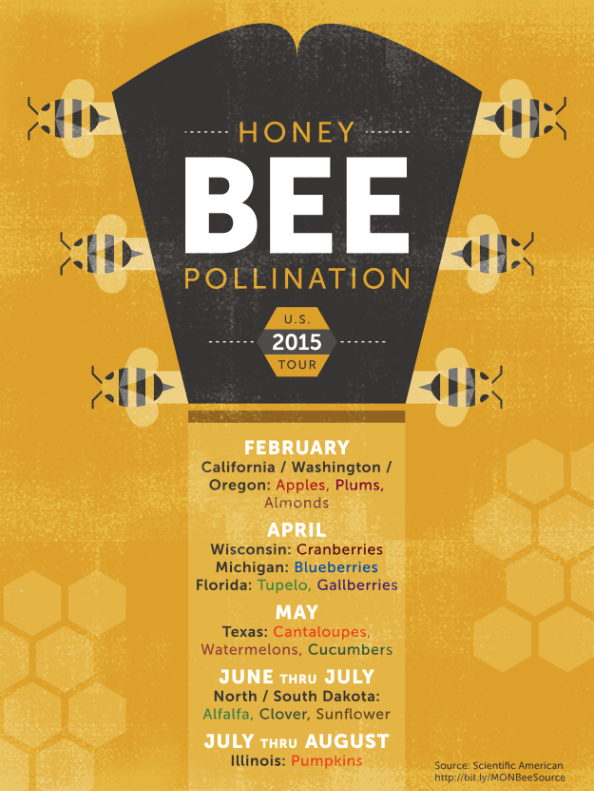Stories | April 5, 2017 | Read Time: 3 minutes
Almond Bloom Brings the Bees
In February and March each year, central California is home to up to 2 million honeybee colonies. And it’s not because of the sunny, wonderful weather.
Commercial beekeepers and bees are descending on the almond farms of central California to have honey bees help with pollinating almond trees during the bloom period. This time is basically when the crop is made, as pollination will literally set the seed for the 2 billion-pound (billion!) California almond crop.
“We call these ‘pollinator events’ in the beekeeping community,” said Jerry Hayes, honey bee health expert at Monsanto. “Commercial beekeepers drive from all over the country to have their honey bees pollinate the almond crop. The honey bee’s impact on food production shouldn’t be taken lightly.”
With nearly one-third of our fruits and vegetables pollinated by traveling honey bees, it’s amazing how much impact such a small creature has on our food system. The honey bees will also travel around the country to pollinate watermelons, blueberries, pumpkins and dozens of other crops throughout the growing season.


How pollinating events work
Hayes says this is the typical set up for a honey bee colony that’s place in an almond grove:
- The commercial beekeeper contracts with a grower to have colonies of honey bees placed in a grove when bloom season begins. There are typically 4-6 colonies per pallet.
- Each colony has about 30,000 bees. About 10 percent of the colony is a group of foragers—this is the group that leaves the hive to search for food. In this case, it’s almond pollen, but the bees are looking for other sources of nutrition as well. The rest of the colony stays to take care of baby bees and the queen.
- Bees will stay within 2 to 2.5 miles of the hive for their food sources. And they always come back to the hive.
- After the grower determines adequate pollination has taken place, the colonies are moved to another grove or the colonies’ work is complete, and the beekeeper moves to another farm or another crop.
“We need these commercial beekeeping operations in order to sustain almond production,” Hayes said. “There are more than 800,000 acres of almond trees today, and there isn’t a sufficient native honey bee population to pollinate the trees for free, so to speak. If we didn’t have beekeepers bringing bees to California every February and March, we wouldn’t have nearly as many almonds as we do today.”
More than 80 percent of world almond production takes place in California. And if weren’t for the honey bees, farmers wouldn’t be able to provide a nutritious product like the almond to consumers around the world.









